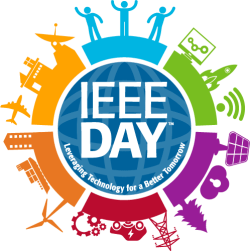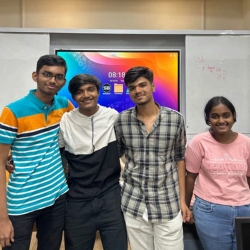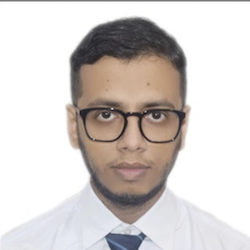Celebrated Service: A Conversation with Dr. Joseph Bumblis, Richard E. Merwin Award Recipient
 As a distinguished Life Senior Member of the IEEE, Joseph Bumblis has displayed dedicated service within the computing community. With a storied career spanning academia and industry, he cemented his legacy through pivotal roles at the University of Wisconsin–Stout, BAE Systems, Purdue University, and beyond. Notably, his tenure saw the inception of innovative curricula in Computer and Electrical Engineering. Joe’s contributions extend beyond the lecture hall, with active involvement in both IEEE and the IEEE Computer Society, he championed various pivotal initiatives. His career, chronicled in an insightful eBook, inspires the next generation of engineers. Alongside his family, Joe’s scholarly pursuits persist, culminating in multiple degrees and a profound impact on the field.
As a distinguished Life Senior Member of the IEEE, Joseph Bumblis has displayed dedicated service within the computing community. With a storied career spanning academia and industry, he cemented his legacy through pivotal roles at the University of Wisconsin–Stout, BAE Systems, Purdue University, and beyond. Notably, his tenure saw the inception of innovative curricula in Computer and Electrical Engineering. Joe’s contributions extend beyond the lecture hall, with active involvement in both IEEE and the IEEE Computer Society, he championed various pivotal initiatives. His career, chronicled in an insightful eBook, inspires the next generation of engineers. Alongside his family, Joe’s scholarly pursuits persist, culminating in multiple degrees and a profound impact on the field.
In honor of his many achievements, he has received the 2024 Richard E. Merwin Award for Distinguished Service Award for, “…contributions to the electrical and computer engineering profession, IEEE, IEEE Computer Society, and academic excellence in computer networking and engineering education.”
First and foremost, thank you for your continued dedication of service to the IEEE Computer Society! How have your participation and the connections you’ve made within the community influenced your career path?
My volunteer activity started in 1999 when I resurrected the IEEE Computer Society’s Technical Committee on Computer Communications (TCCC). TCCC was very active from around 1978 to around 1985. It was during the early 1980s that Marius Graube started the 802 committee under TCCC sponsorship. Dr. Harvey Freeman Chaired TCCC during the 802 activities leading to the ratification of 802.3 (Ethernet), 802.4 (Token-Passing Bus), and 802.5 (Token-Passing Ring). By the time I became Chair the 802 committee was absorbed by the CS Standards Board due in part to TCCC inactivity from 1985 to 1999.
During my four years as TCCC Chair, I formed the first Executive Committee (ExCom) and the first-ever Standing Committee (SC). I brought together leaders from industry and academia to forge a new path for TCCC including the creation of the first-ever Charter and membership newsletter. During the early years, TCCC sponsored two conferences: InfoCom and Local Computer Networking (LCN). My association with TCCC’s past chairs, ExCom, SC, and conference planners exposed me to new insights in industry and academic computer communications product planning and research. Much of what I learned influenced my current work planning as well as ideas opening new career paths. By the end of my second term as TCCC Chair I added seven additional conferences: ICOIN, ISCC, ICNP, WoWMoM, PerCom, IPCCC, and ICCNMC (Technical Association) which furthered my exposure to career possibilities through conference management and planning.
While TCCC Chair, I became active in the Technical Activities Board (TAB) in 2001. I was a member of OpCom and later joined TAB’s ExCom in 2002. I was appointed Vice-Chair of TAB in 2006, While a member of TAB I led the creation of a “New Practitioners ad hoc Committee” in 2007 where I created and gave a detailed presentation with recommendations to TAB on November 6, 2007. This activity was recommended by the CS ExCom and their Hay Group consultants. I also led the effort with Shukri Wakid to introduce the concept of a “Community of Interest” (COI) which was expected to explore the ability of its interested members to define an achievable and relevant work plan for emerging technology. Although early efforts started in December 2007, the initial effort of CoIs would be established by the approval of the T & C Board and would operate under the direction and guidance of the Vice Chair of Technical Activities.
I was requested to serve on the “Joint TAB/C&T Committee” on March 5, 2006, to evaluate the vitality of Computer Society conferences. With my help and editing, the committee successfully delivered a new conference business model in January 2007. I went on to Chair TAB’s “Online Communities Committee” in 2006 and 2007. Additional activities include a close working relationship with the Electronic Products & Services Board (EPSB) Communities project and the IEEE Tools Evaluation Team. I served as an Associate Member of the CS Standards Committee “Foundation for Intelligent Physical Agents” (FIPA) from October 2005 to December 2007.
I made contributions to the IEEE-USA “Committee on Information and Communication Policy” regarding a letter to GAO, OMB, and the US Congress related to transitioning to IPv6. Draft posted on September 8, 2005.
The friends I made during this time in TAB also shaped my career decisions and influenced my continued service to the IEEE and the CS. Engaging in discussions and evaluating new ideas helped shape my viewpoint on working with diverse teams.
In late 2007 I accepted the VP appointment to the IEEE Computer Society Technology and Conferences (T & C) Board. I served the T & C Board through December 31, 2008. Before I was appointed VP of the T & C Board, I was asked by the President of the IEEE Computer Society in 2007 to serve as a member of the Presidential Committee to draft the Policies and Procedures Manual (PPM) for the new Technical and Conference Activities Board (T & C Board).
Honor your colleagues’ achievements. Nominate Someone for a Major Award Today!
With input from my Vice Chairs, I created a T & C Board presentation to the CS Executive Committee in January 2008. This included T & C Board members who I recruited and already agreed to serve on the Board and the established goals of the new Board. I created many of these goals while my Board members continued to work on their particular areas of responsibility.
During the first nine months of the T & C Board, I led the effort (including editing and review) of the:
-
-
TMRF Handbook rewrite,
-
TAB Handbook revision to create the T & C Board Handbook, and
-
CIMA (Common Instrument Middleware Architecture) for Grid storage access. Efforts were presented to the CS ExCom on 9-29-2008.
-
I published the first T & C Board newsletter on May 24, 2008. This newsletter highlighted:
-
-
The members of the T & C Board,
-
Approval of the Computer Society’s (CS) Policies and Procedures Manual (PPM) which created the T & C Board through the merger of TAB and C&T as approved by the BoG in November 2007’
-
Examination of the Value Added Tax (VAT) and Payment Card Industry (PCI) banking compliance being implemented by the CS,
-
TC/TF relationship to Standards Activities, and
-
Discussions regarding TC organization and membership.
-
While VP of the T & C Board, I served on the “Transactions on Services Computing Search Committee” to select an Editor-in-Chief. During this time I was also an active member of the “Membership Development Committee”
I led the early efforts to guide the CS Conference Publications Operations Committee (CPOC) proposal for a new “Task Force” that would function as an umbrella Technical Committee (TC), finding specific TC sponsors for NSCs (Non-Supported Conferences) among existing TCs, or sponsoring them itself.
My role as TCCC Chair, Vice-Chair of TAB, and T & C Board Vice President helped define my success at Purdue University, BAE Systems, and the University of Wisconsin-Stout.
You’ve served in various roles throughout your career, including positions at BAE Systems and Systems Architecture at US West, and several academic positions at various universities. Can you share a pivotal moment or project that significantly shaped your approach to engineering and teaching?
Discussing a “pivotal moment” is at times extremely difficult given a long and engaging career. I believe three activities helped shape my approach to engineering and teaching; 1. The U.S. Air Force (USAF), 2. Standards engagement, and 3. Computer integration solutions.
Following high school graduation I knew I wanted to do something in the electronics field, with the Vietnam War raging on, I felt that carrying a toolbox instead of an M-16 was probably a good career choice. After a few aptitude tests, the USAF decided to send me for training in Ground Control Approach (GCA) RADAR maintenance. I spent the next several years working on mobile and fixed-position RADAR systems. I was also exposed to other navigational equipment like Instrument Landing Systems (ILS) and the Tactical Air Navigation System (usually called TACAN). Although I never received formal training in ILS or TACAN, the exposure through interaction with other maintenance personnel
was enlightening and sparked my further interest in electronic systems. I found my focus was on how all this equipment worked and how to engineer the system to be more efficient. I recall using several GCA radar examples in several of my classes, especially during discussions of wireless networks.
I was involved with several standards organizations like the ANSI X3T12 (FDDI) Maintenance Committee, and an invited member of the ANSI X3T11 (Fibre Channel) Standards Activity where I contributed to the HIPPI/ATM Gateway Draft Standard: TR/X3.18-199x; Fibre Channel – 10-Bit Interface (1994). I was an invited participant in the NraD/AEGIS COTS I/O Working Group (1996) where I defended FDDI as a fault-tolerant network of choice for use in the Aegis battleship redesign. I also worked as an Associate Member of the CS Standards Committee “Foundation for Intelligent Physical Agents” (FIPA). Some might think this ironic since the FIPA standards became a foundation for creating my dissertation in 2007. FDDI, HIPPI/ATM, and Fibre Channel drove my interest in computer communications and became topics in several papers I published discussing the technologies. Examples of each were used in courses I taught at Purdue University as well as the University of Minnesota.
There were two computer integration projects I was involved with that solidified my approach to engineering: 1. PDP-11/i8080A integration and 2. Computer systems connectivity.
In the 1970s I was part of a computer engineering team at NCR tasked to integrate a Digital Equipment Corporation’s PDP-11 with an Intel 8080A microprocessor-based point of sale (POS) terminal. The PDP-11 served as a software development platform to control, load, and debug 8080A assembly language code. Although never publicly documented, the integration of two distinct computers involved unique forms of remote DMA, assembly language data presentation, and remote nth-occurrence breakpoint control. The system integrated digital cassette tape for data storage and retrieval. ASCII CRT display units linked the 8080A software running on POS to PDP-11 control functions. It was this project that led me to pursue advanced degrees and venture further into the engineering of computer systems.
My engineering career would lead me to Control Data Corporation (CDC) where I was an engineering team leader developing the first Ethernet-based local computer network linking the CDC CYBER-170 supercomputer mainframes to distributed PCs using technology described in the original IEEE 802.3 standard. My industry career would lead me to several new engineering challenges including test automation software design, systems engineering and architecture (while at U S WEST), and computer network engineering in automation (while at Allen Bradley).
Your integration of a DEC PDP-11 with eight Intel 8080A microprocessor-based point-of-sale terminals at NCR is a unique engineering solution. Could you elaborate on the challenges you faced during this integration and the lessons learned that have stayed with you throughout your career?
Anyone reading this interview will either remember or will now realize that in the early 1970s, there were no personal computers (PCs); there were no software-integrated design environments (IDEs); there were no easy methods to load, run and debug microprocessor-based systems since microprocessors were themselves just a few years old. As such there existed an engineering need to connect multiple microprocessor-based POS terminals to a central computer for software loading, storage, debugging, and testing. The DEC PDP-11 was chosen because it was the fastest general-purpose processor of its time. Moreover, the interface requirements were also well documented. As a centralized computer, the PDP-11 had to load software to target POS terminals, support data movement to/from digital cassette tape, and utilize remote DMA to/from each POS terminal from/to PDP-11 memory and tape storage.
This effort taught many lessons. Since each POS terminal was connected to the PDP-11 via a 50-foot Unibus Cable; the time delay between user requests and PDP-11 response was at times problematic. This was further complicated by the Transistor-Transistor-Logic (TTL) used in the design. We had no other logic families available; CMOS would not become commercially viable until the 1980s. These restrictions involved designing unique DMA solutions, look-ahead buffers, and some hold-time constraints to give users a look and feel of real-time response. Many of these experiences moved with me throughout my entire engineering and academic career. The primary “lesson learned” was to always look for new technologies to enhance the design of any computer system. At this time the PDP-11, intel 8080A, and TTL represented the state of the art in computer engineering.
After creating and teaching courses for the Computer and Electrical Engineering program at the University of Wisconsin–Stout, do you have any advice for educators looking to follow a similar career path?
In general, there is no sense in dwelling on the past, and continually going through the shoulda-woulda-coulda cycle of past decisions. The bottom line is you are where you are, and what is—is. So, begin by looking forward from this point, and only look back if you can learn something new. I had almost 40 years of experience when I arrived at the University of Wisconsin-Stout (UW-S). It was this diverse experience that helped me gain the position at UW-S. I was hired to help create a new program in Computer and Electrical Engineering (CEE). UW-S wanted this new CEE program to focus on embedded systems which included FPGA design, programming languages including assembly and C, and computer packaging in confined spaces.
Throughout my career, I was working full time and either working on a new degree or teaching as an Adjunct Professor. My teaching activity started shortly after earning my BSEE degree. I was asked to teach a course at Central Ohio Technical College (COTC) on the Motorola 6800 microprocessor and its assembly language programming constructs. From those early days, I continued to teach software engineering at the University of St. Thomas, software engineering and computer networks at the University of Minnesota, and computer organization and architecture at Metropolitan State University. My industry experience and success as an Adjunct Professor led to my path to UW-S.
Career growth assignments can take many forms. They can support growth technically, politically, and/or managerially. I always tried to consider what I call my knowledge capital; i.e., know-how that results from experience, transformation of information into knowledge, learning, and current skills. One’s knowledge capital can create a competitive advantage during most career growth. I believe my knowledge capital is a culmination of my past experiences which also led me to UW-S.
While this is a difficult challenge, it’s an extremely worthwhile one: Generative LLMs are going to be important in software development, but they can and do make mistakes; still, we have to find ways to help humans effectively use these outputs.
Throughout your career, you’ve been involved in diverse areas, including software engineering and computer networking. How do you envision these fields evolving in the future?
The evolution of technology is always hard to predict. In the 1980s and 90s when PCs were becoming ubiquitous, it would have been difficult to envision smartphones with embedded microprocessors that far exceeded the capabilities of those used in early PCs. Moreover, the evolution of computing systems and distributed software once confined to large, environmentally controlled rooms would migrate to hand-held devices touting artificial intelligence (AI) connected to a vast worldwide network infrastructure. Was ChatGPT inevitable? Or is it a natural evolution of all that came before it? What new developments may evolve from these large language models (LLMs)?
The only constant is change. The gate length of a CMOS transistor is the defining parameter of the transistor size and is presently about 20 nanometers in commercial electronic chips. Current thinking states it is not possible to shrink it below 5 nanometers using silicon. If correct, this implies manufacturers can shrink the size of transistors by a factor of four before they have to find other materials to make smaller transistors. Smaller transistors mean smaller packages and lower power demands. This may perhaps fuel new breakthroughs in medical implants and wearable computers.
Software continues to evolve as well. In some respects we are still linked to software development of the past; e.g. linking libraries to code during compile time. New languages continue to push the boundaries between procedural, OOPL, and functional languages. Languages like F#, Clojure, Elixir, PureScript, Swift, Go, Dart, Apache Groovy, Java 17, and Crystal may at some time dominate. Hopefully, C and Java will still have their role to play.
Computer networks also continue to change and grow. The advent of streaming services like Netflix, YouTube, Amazon Prime, and Disney+ continues to stress network bandwidth and response time. For example, a 4K/UHD stream from Netflix requires 15 Mb/S bandwidth; while Disney+ 4K/UHD requires up to 25 Mb/s. At the infrastructure level, Cisco has worked on fast, low-latency products and designs to support the massive flow of streaming data. They support both IP multicast video streams and unicast video streams to reduce network latency.
As demand grows I suspect all of these technologies to have some growing pains in ensuring high-quality service to the user.
During your time of full-time employment, raising a family, and volunteering with the IEEE Computer Society, you’ve earned your BSEE, MSMoT, and Doctorate in Information Technology. How do you perceive the significance of ongoing education and continuous learning with the other demands on your time, and what motivates you to continue expanding your knowledge?
Life-long learning has always been at the heart of my career growth. I’m reminded of several IEEE-USA career principles, including:
1. Keep current technically, and 2. Keep current professionally. I’ve always wanted to learn new things. This learning process often included new and different engineering challenges that may lie outside of my typical comfort zone. Today I see changes in the way technical professionals keep current. With product development cycles shortening, interfacing at all hours of the day and night with teams dispersed throughout the globe, and the ever-changing business model that no longer values employee training, the need to keep current has fallen on the employee’s shoulders; albeit in industry or academia. Vendors still offer training with their products—both instructor-led and web-based courses—like webinars and online tutorials. Universities that partner with manufacturers are also offering continuing educational opportunities, through short courses and MOOCs. Many excellent periodicals offer articles and papers on topics of technology research, expansion, and migration; many of which can be found in the IEEE digital libraries.
In my particular case, educational growth was what some might call unconventional. I started work on my Bachelor of Science degree in Electrical and Computer Engineering (BSEE) while working full time. After several quarters (we had quarters back then, not semesters) I was married and continue to enjoy retirement with her after 47 years of marriage. I completed my BSEE a year before our first child was born in 1979. Over the years I had several challenging positions with Dow Chemical, Allen-Bradley, Control Data Corporation (CDC), McDonnell Douglas Space Systems Company (at the Kennedy Space Center in Florida), and 3M where I started working on my Master of Science degree in Management of Technology (MSMoT) at the University of Minnesota. As with my BSEE, I was working full-time while completing the requirements for the MS degree. By this time we had two children; my wife was a full-time IT Analyst. Needless to say, time was stretched very thin.
I eventually ended up at BAE Systems working on both Army and Navy contracts. I was encouraged by my management to complete my doctorate since I already held an MS degree and I took several doctoral classes before joining BAE Systems. My children were older by this time so with my family’s support I started down the path toward a Doctorate in Information Technology and Business Administration (DIT/BA). Three and a half years later my dissertation was approved and I was awarded my Doctorate.
I was driven by my need to learn new things. Although I was 58 years old by the time I earned my DIT/BA, it opened doors that would have been otherwise closed. I’ve been retired since 2013 but I continue to stay as current as possible given my age and interests.
More About Joseph Bumblis
Joseph “Joe” R. Bumblis is currently a Life Senior Member of the IEEE. In 2013, he retired from the University of Wisconsin–Stout (UW-S) after creating and teaching courses for the university’s new Computer and Electrical Engineering program. Before joining UW-S Joe held positions at BAE Systems, Purdue University, Systems Architecture at U S West, and several Adjunct Professor positions at the University of Minnesota, University of St. Thomas, and Metro State University where he designed and taught courses in software engineering and computer networking. Early in his engineering career, he held positions at NCR, Dow Chemical, 3M, and Control Data Corporation where he created unique solutions to engineering problems; including the integration of a DEC PDP-11 with eight Intel 8080A microprocessor-based point-of-sale terminals at NCR. The PDP-11 served as a software development platform to control, load, and debug 8080A assembly language code. This integration involved unique forms of remote DMA, assembly language presentation, and remote nth-occurrence breakpoint control.
Throughout his career, Joe was active in IEEE, IEEE Computer Society (CS), and ASEE. He served on the IEEE Tellers Committee, CS TCCC Chair, IEEE*USA Committee on Information and Communication Policy, Vice Chair of TAB, first VP of the T & C Board, and Project Manager Technical Leaders Committee. He also participated in the Professional Practices Committee (PPC), and helped start Community of Interest activities under TAB. Finally, to help aspiring engineers Dr. Bumblis wrote an eBook for IEEE*USA chronicling his journey in electrical and computer engineering.
In addition to IEEE, Joe was a member of the ANSI X3T12 (FDDI) Maintenance Committee. He was also an invited member of the ANSI X3T11 (Fibre Channel) Standards Activity where he contributed to the HIPPI/ATM Gateway Draft Standard: TR/X3.18-199x; Fibre Channel – 10-Bit Interface (1994). He was an invited participant in the NraD/AEGIS COTS I/O Working Group (1996).
Joe continues his retirement with his wife of 47 years Mary Kay. Together we have two children (Joe and Karen) and two grandchildren (Justin and Eric). During this time Joe earned his BSEE, MSMoT, and Doctorate in Information Technology.









